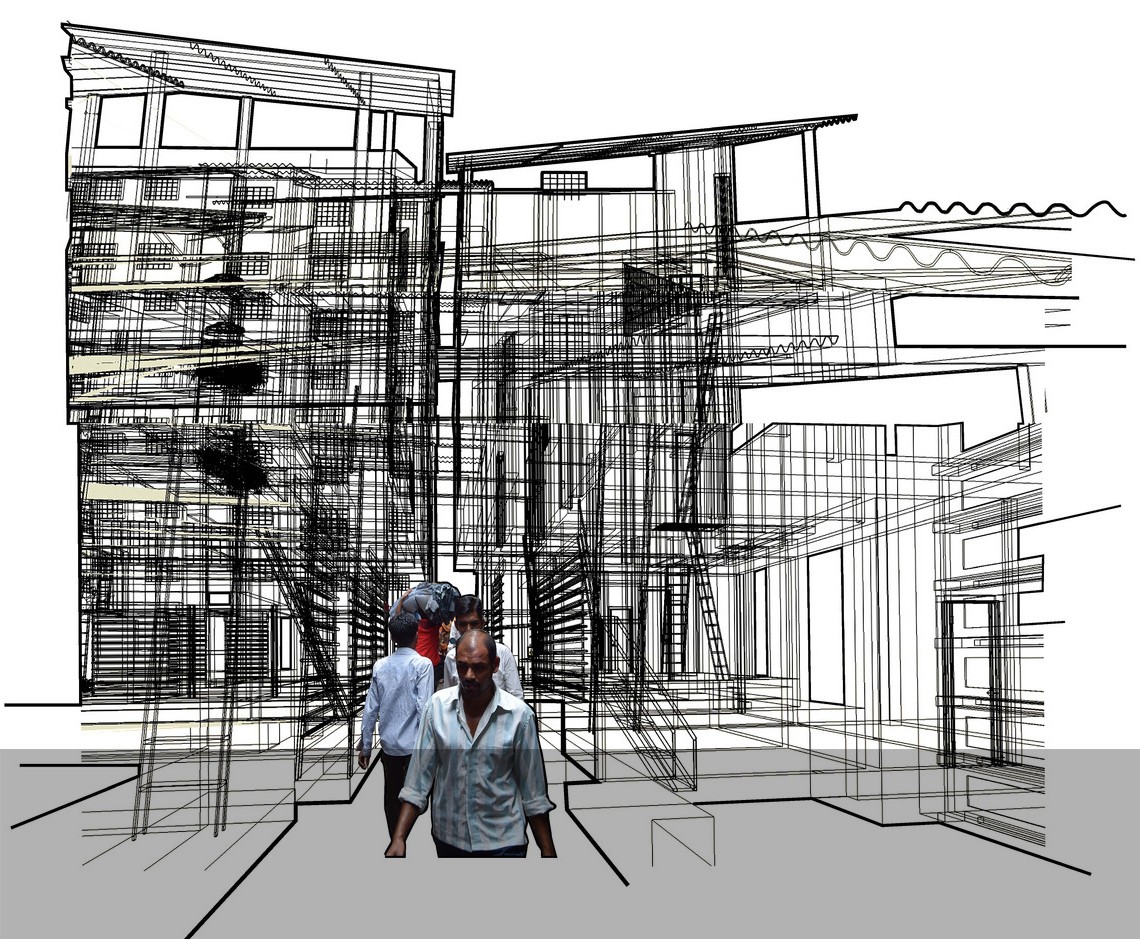Bareilly Street

Bareilly Street
Two months ago, three young architects from the urbz team -Samidha Patil, Perrine Cariou and Alex Albert- went back to that street to see how it had evolved. A couple of decades ago, the street was almost entirely inhabited by families from the city of Bareilly in Uttar Pradesh, like the Khan’s. This is how the area got to be known as Bareilly compound. Most of the workshops in the area were in the garment business. But when the competition in this sector became too fierce, many of the workshops turned to leather manufacturing.
Some of the families in Bareilly compound have been there for about four generations, but the street is now largely dominated by workshops, with a proliferation of retail activities at the ground level. The workshops almost always double up as dormitories, where seasonal workers sleep while they are in Mumbai. The main lane is rather narrow, but constantly busy with people passing through or stopping to make some purchase at one of the 8 leather shops out of 22 shops lined in the street. This street opens to a square around which there are 5 residences, 33 workshops and a public toilet. Around 245 people live and work in Bareilly Compound. They are predominantly Muslim, but not only from Bareilly. Several come from Bihar and other parts of India.
This shift in the market has affected the community and forced some of them to move out of the street. Today, the numbers of both, the community and the garment market, has reduced so much that there are few traces of its once bustling presence. This change is reflected in the appearance of the street. During the heyday of the garment market, there were many more families living in the street. Most of them involved in the production or wholesaling of garments. There are only a few families left in the street now. Their spaces have been replaced by workshops, which have multiplied in the street. People still live in the street, but most of the residents are single men, who have less of an investment in the improvement of the general conditions. Quite a few families have kept businesses in the street by moved out to find better living conditions elsewhere. The government has been neglecting infrastructure for years now and even the most invested families, such as the Khan’s feel disillusioned about possible improvement. Many efforts by inhabitants have been made, but without official support, things such as drainage or public toilets cannot be fixed.
19.043015, 72.8571376
Next to Salman Mithaiwala, Bareilly Compound, 90 feet road, Dharavi

